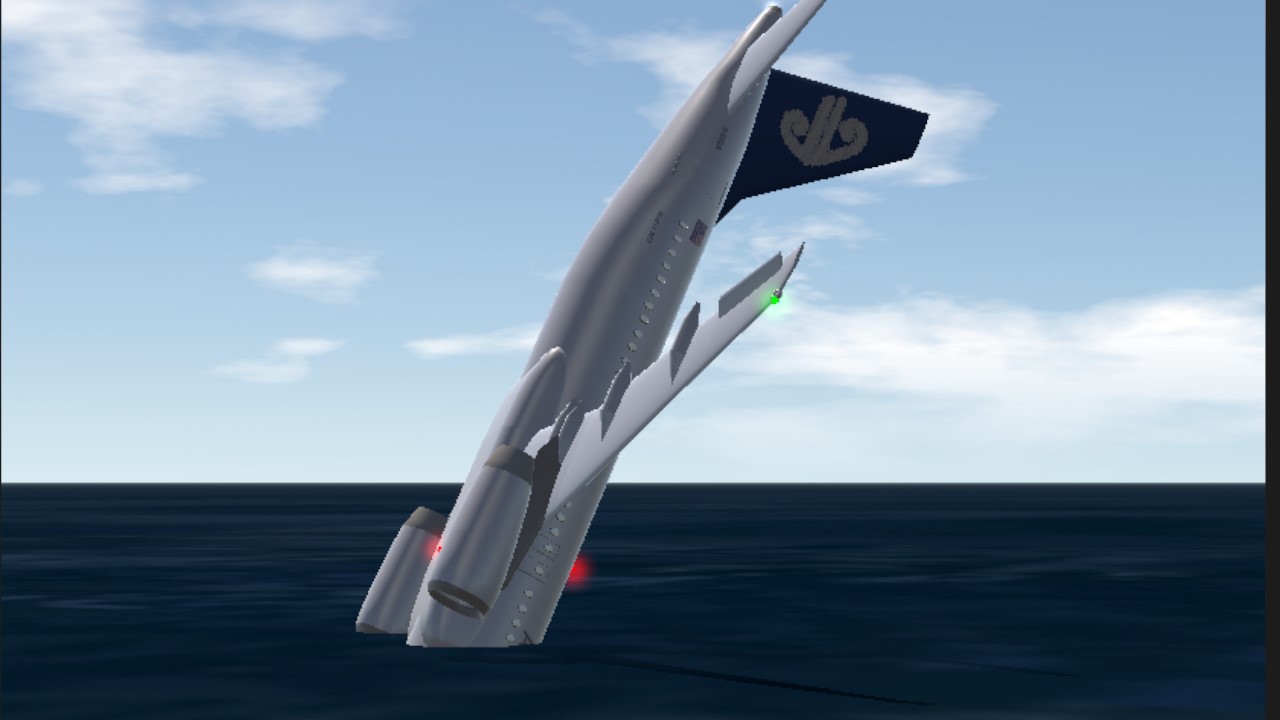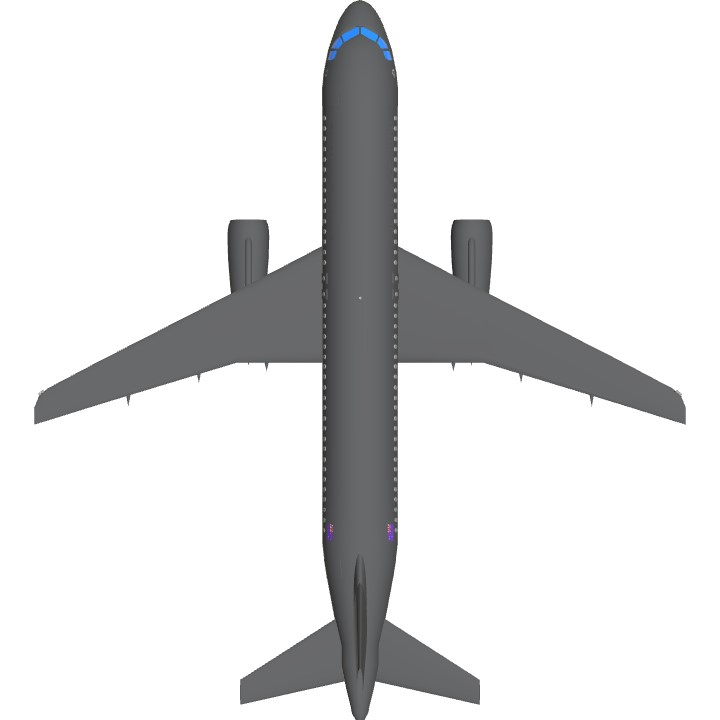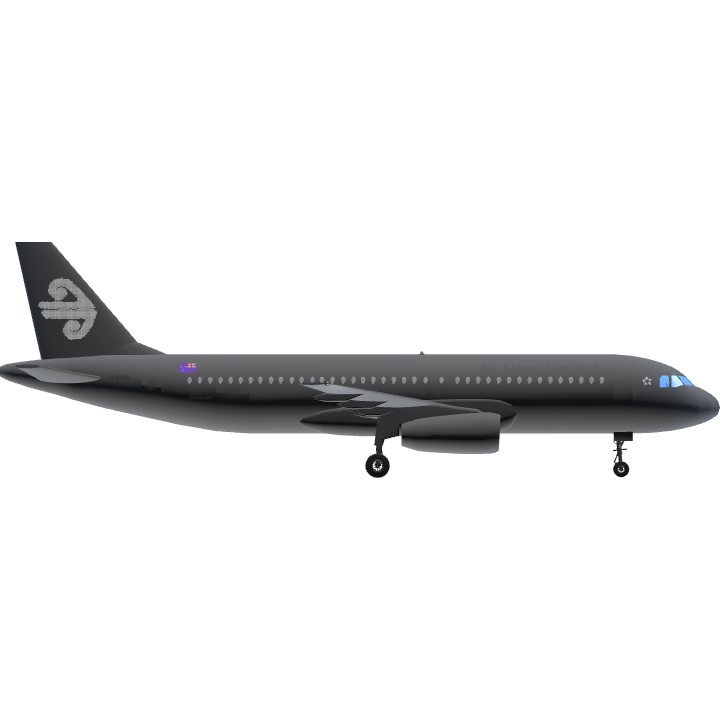About XL888T:
Airbus A320 D-AXLA had been leased by XL Airways Germany since May 2006. The airplane was due to be returned to its owner, Air New Zealand, on December 1, 2008. The Airbus was ferried to Perpignan Airport, France, where it underwent maintenance at EAS Industries. It was also repainted in full Air New Zealand livery, but retained the registration D-AXLA.
The leasing agreement specified a programme of in-flight checks to ensure the airplane was fit for purpose.
The crew was made up of a captain and a co-pilot from XL Airways Germany. A pilot and three engineers from Air New Zealand, as well as a representative of the New Zealand Civil Aviation authority were also on board. The pilot and one of the engineers had taken seats in the cockpit.
The takeoff took place at 15:44 hours local time. A few minutes after takeoff, the crew requested to perform a "360", but this not authorised by the controller. The en route controller explained to the crew that they could not undertake tests in general air traffic and that the flight plan filed was not compatible with the manoeuvres requested.
The crew announced that they wanted to continue on the route planned in the flight plan and asked to climb to FL310 before turning back towards Perpignan. At around 16:12, the crew turned back. Some checks planned in the flight programme were performed. The maximum flight level reached was FL390.
At 16:33, in descent towards the FL130, the crew contacted Perpignan Approach. They were then cleared to descend to FL120 towards the PPG VOR. The approach controller asked them to reduce speed to 250 kt and to plan a hold at the PPG VOR. They were number two on approach.
At 16:34, the crew requested radar vectoring. The approach controller asked the crew to turn left onto heading 090 and to reduce the speed to 200 kt. The approach controller asked the crew to reduce speed to 180 kt and to descend to FL 80 then to FL 60.
From 16:38:03 and for about forty seconds, the pilot from Air New Zealand described the actions to take to perform a check at low speed planned in the programme. At around 16:40, the approach controller asked the crew to turn right on heading 190 and to maintain 180 kt. The airplane speed was 215 kt. About one minute later, the approach controller cleared the crew to the LANET ILS approach for runway 33 and to descend towards 5,000 ft altitude. At the request of the crew, the approach controller repeated the message. While the co-pilot was reading back, the captain indicated to the Air New Zealand pilot that the low speed flight should be made later, during the flight towards Frankfurt. He even considered not performing it.
At 16:42:14, the approach controller asked for the speed of the airplane. The co-pilot answered that the speed was falling then at 16:42:25 that it was 180 kt. The approach controller then asked them to maintain 180 kt and to descend to 2,000 ft. The slat and flap controls selector was put in position 2.
At 16:42:46, the captain stated that the approach was not included in the database. Thirty-six seconds later, the co-pilot carried out the approach briefing.
At 16:43:37, the captain announced that he was passing under the cloud layer. He disengaged the autopilot and asked the Air New Zealand pilot what he wanted. The latter answered that it was necessary to go slowly and described to him the necessary actions to activate the alpha floor protection. During these exchanges, the captain called for gear extension and put the thrust levers in the IDLE position. At the same time, the approach controller asked the crew its intentions twice. The co-pilot answered that they wanted to make a go-around and continue towards Frankfurt.
At 16:44:30, the captain stabilised the airplane at an altitude of 3,000 ft. The airplane was in FULL configuration. In thirty-five seconds, the speed went from 136 to 99 kt and the horizontal stabilizer went to the pitch-up stop. The stall warning sounded. The pitch angle was then slightly below 19 degrees. The thrust levers were advanced towards the TO/GA position in the following second. While the thrust on the engines increased in a symmetrical manner, the speed continued to drop to 92.5 kt, then began to increase. The airplane started to roll slightly to the left, then to the right. The captain countered these movements.
At 16:45:15, the flight control laws changed to "direct" law. The bank angle was 50 degrees to the right. At 16:45:19, the stall warning stopped. The bank angle was 40 degrees to the left.
One second later, the pitch angle was 7 degrees, the wings were close to horizontal and the speed was 138 kt. The airplane?s pitch and altitude then began to increase. During this climb, the stall warning sounded a second time. The crew retracted the landing gear and the flight control law in pitch changed to "alternate".
At 16:45:44 the maximum recorded values were: pitch 57 degrees, altitude 3,800 ft. The speed was below 40 kt.
At 16:45:47 the stall warning stopped. It sounded again five seconds later. From 16:45:55, the airplane banked to the right up to 97 degrees and its pitch reached 42 degrees nose-down. At 16:45:58, the stall warning stopped. The slat and flap controls selector was placed in position 1, then 0 two seconds later. The captain used the flight controls and the thrust levers to try to recover the airplane. At 16:46:00, the stall warning stopped. At 16:46:06.8, the last recorded values were a pitch of 14° nose down, a bank angle of 15° to the right, a speed of 263 kt and an altitude of 340 ft. Less than a second later, the airplane crashed into the sea.
Probably cause:
The loss of control of the aeroplane by the crew following the improvised demonstration of the functioning of the angle of attack protections, while the blockage of the angle of attack sensors made it impossible for these protections to trigger.
The crew was not aware of the blockage of the angle of attack sensors. They did not take into account the speeds mentioned in the programme of checks available to them and consequently did not stop the demonstration before the stall.
The following factors contributed to the accident:
* The decision to carry out the demonstration at a low height;
* The crew?s management, during the thrust increase, of the strong increase in the longitudinal pitch, the crew not having identified the pitch-up stop position of the horizontal stabiliser nor acted on the trim wheel to correct it, nor reduced engine thrust;
* The crew having to manage the conduct of the flight, follow the programme of in-flight checks, adapted during the flight, and the preparation of the following stage, which greatly increased the work load and led the crew to improvise according to the constraints encountered;
* The decision to use a flight programme developed for crews trained for test flights, which led the crew to undertake checks without knowing their aim;
* The absence of a regulatory framework in relation to non-revenue flights in the areas of air traffic management, of operations and of operational aspects;
* The absence of consistency in the rinsing task in the aeroplane cleaning procedure, and in particular the absence of protection of the AOA sensors, during rinsing with water of the aeroplane three days before the flight. This led to the blockage of the AOA sensors through freezing of the water that was able to penetrate inside the sensor bodies.
The following factors also probably contributed to the accident:
* Inadequate coordination between an atypical team composed of three airline pilots in the cockpit;
* The fatigue that may have reduced the crew?s awareness of the various items of information relating to the state of the systems.
Specifications
General Characteristics
- Predecessor (Updated)A320[IAE]
- Successors 1 airplane(s) +14 bonus
- Created On iOS
- Wingspan 111.5ft (34.0m)
- Length 123.3ft (37.6m)
- Height 40.4ft (12.3m)
- Empty Weight N/A
- Loaded Weight 43,424lbs (19,696kg)
Performance
- Power/Weight Ratio 0.579
- Horse Power/Weight Ratio 0.069
- Wing Loading 27.6lbs/ft2 (134.9kg/m2)
- Wing Area 1,571.5ft2 (146.0m2)
- Drag Points 8651
Parts
- Number of Parts 466
- Control Surfaces 9
- Performance Cost 2,832




